Being a creative professional, there’s only one thing that scares me more than software crashes. And that’s client feedback.
Last year, I worked on a hectic video project for a mobile application. I spent several late nights and weekdays on it. When the clock hit 23:00 on a Friday night, the first draft was finally finished and I sent it to my client.
It didn’t take long for the anxiety to creep in. I had no idea how the feedback would turn out—would it be constructive, vague, cheerful, or just hurtful?
Even though Frame.io’s feedback system makes miscommunication less frequent with tools such as frame-accurate comments and hashtagging, it doesn’t filter out harsh client comments. No system can. (Or should, for that matter.) Suddenly I received a message notification and I saw the client’s verdict.
“I don’t like it 🙂”
It’s never fun to hear that you might have done something wrong. But we’ve got to move forward, right? And the best way to do that is to understand why criticism is so difficult to deal with in the first place.
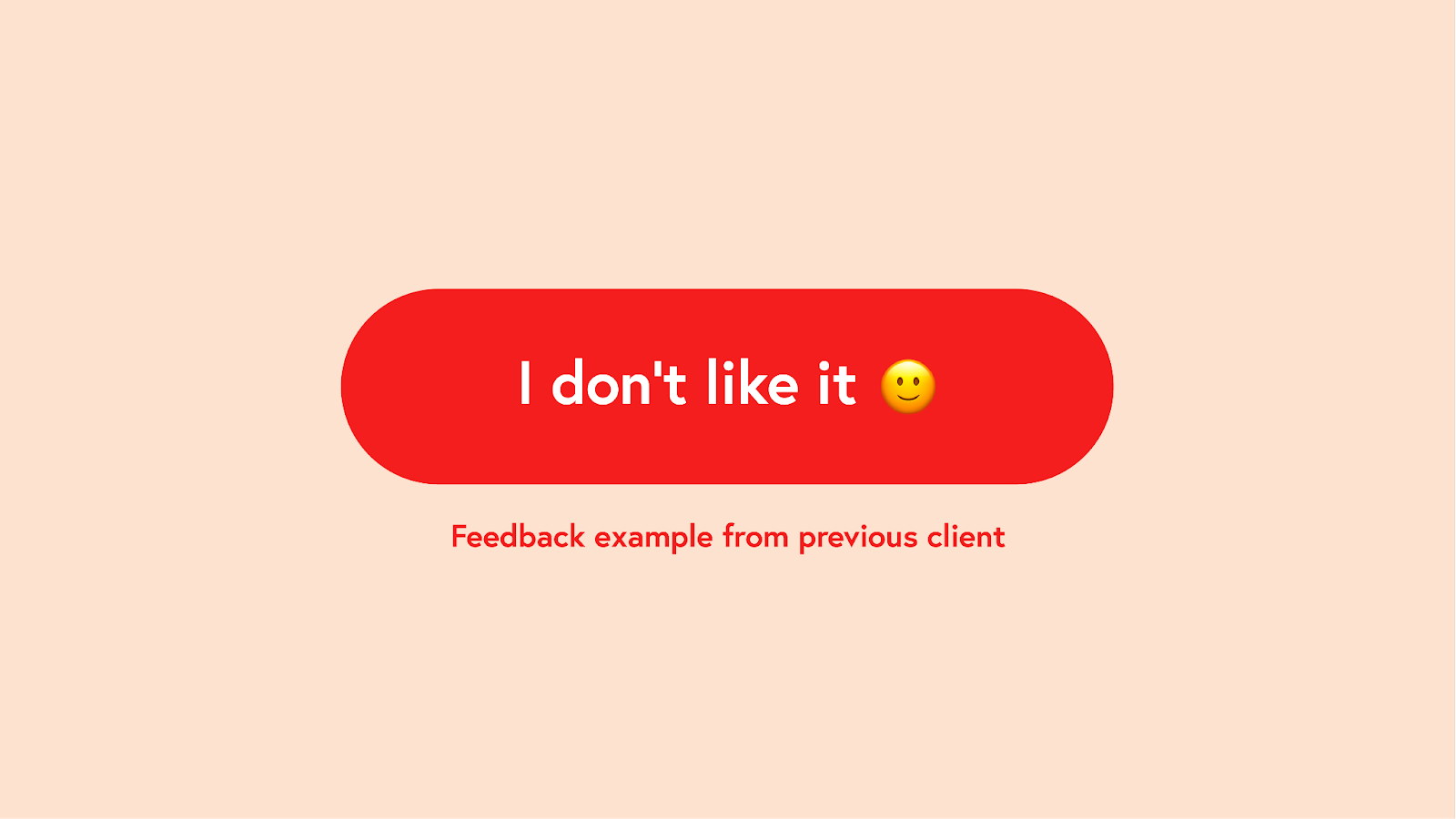
Why is it so difficult to deal with feedback?
Noone likes to receive criticism. It’s hard to have things pointed out for being wrong, especially when you’ve poured all of your energy into a project. Even with experience, it can be harsh to hear that what you’ve created may not have been well-received.
A natural response would be to reject the feedback and defend your work. But while this might help as a defense against your client’s—or manager’s, if it’s an internal project—painful words, you might be ignoring an ugly truth.
Maybe—just maybe—they’re right about something.
So what happens to us when we encounter less-than-positive feedback? Let me introduce the five stages of receiving feedback that I was introduced to by the Swedish coach and facilitator Hanna Hedberg. These have helped me to re-evaluate the purpose of feedback. Hopefully they’ll help you, too.
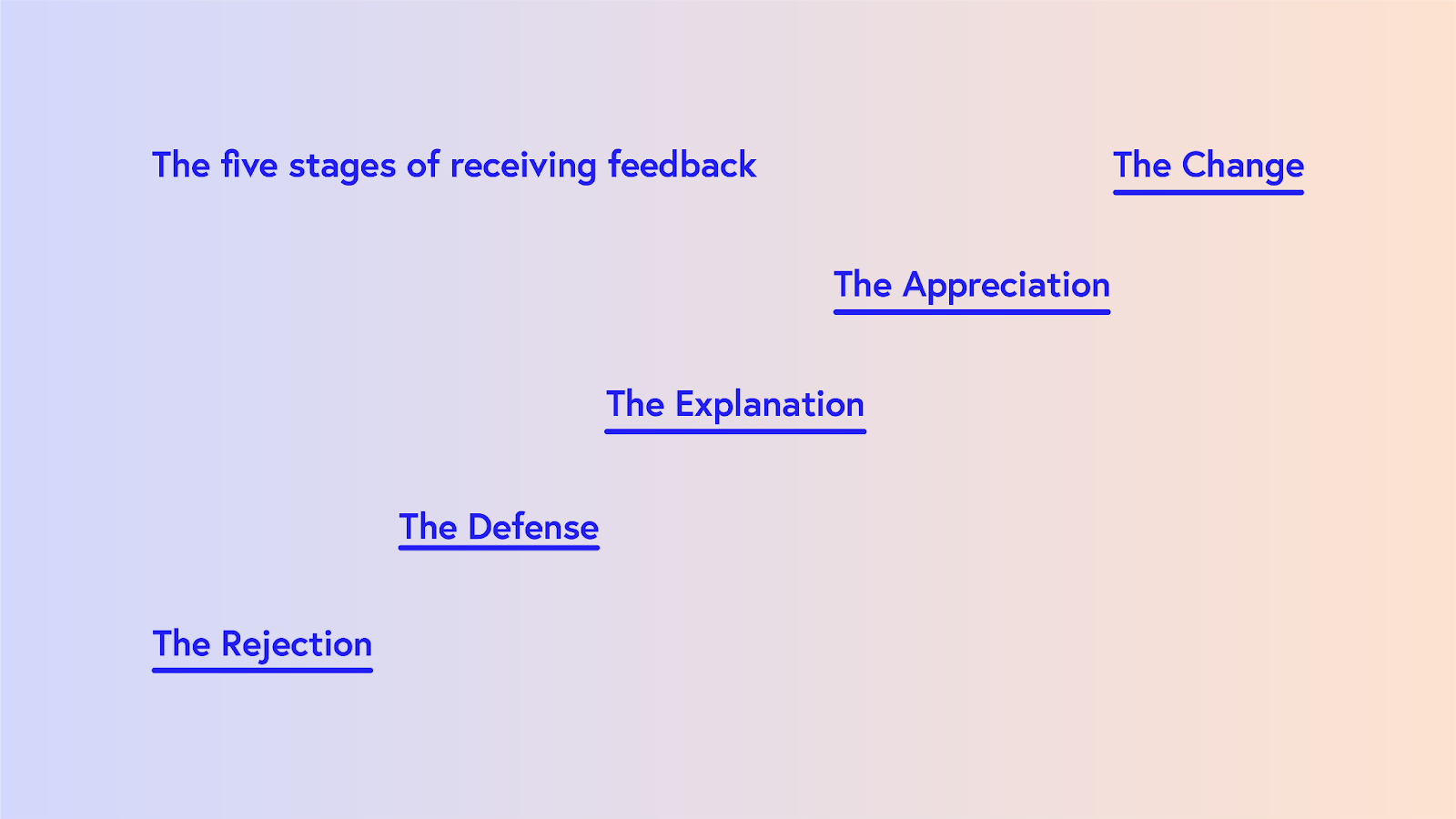
Stage 1: Rejection
Like a dramatic breakup, the gut feeling is to deny reality. Thoughts like “I’ve not done anything wrong” or “This is not my problem” are common responses. We might even go so far as to blame someone else.
This first step is all about pushing back against the feedback instead of embracing it. But, no matter how bruised your pride might be, this is seldom a sound coping mechanism.
Stage 2: Defense
Even if you acknowledge the feedback, it might still not be easy to fully comprehend it. The feeling may remain that it is not completely right. This can manifest as a feeling that the client has simply misunderstood your intentions and has not seen the whole picture.
But this is still placing yourself behind a wall. It’s not like that. I am right. You are wrong. End of discussion.
It’s certainly easy to feel like that when you’re caught up in the moment.
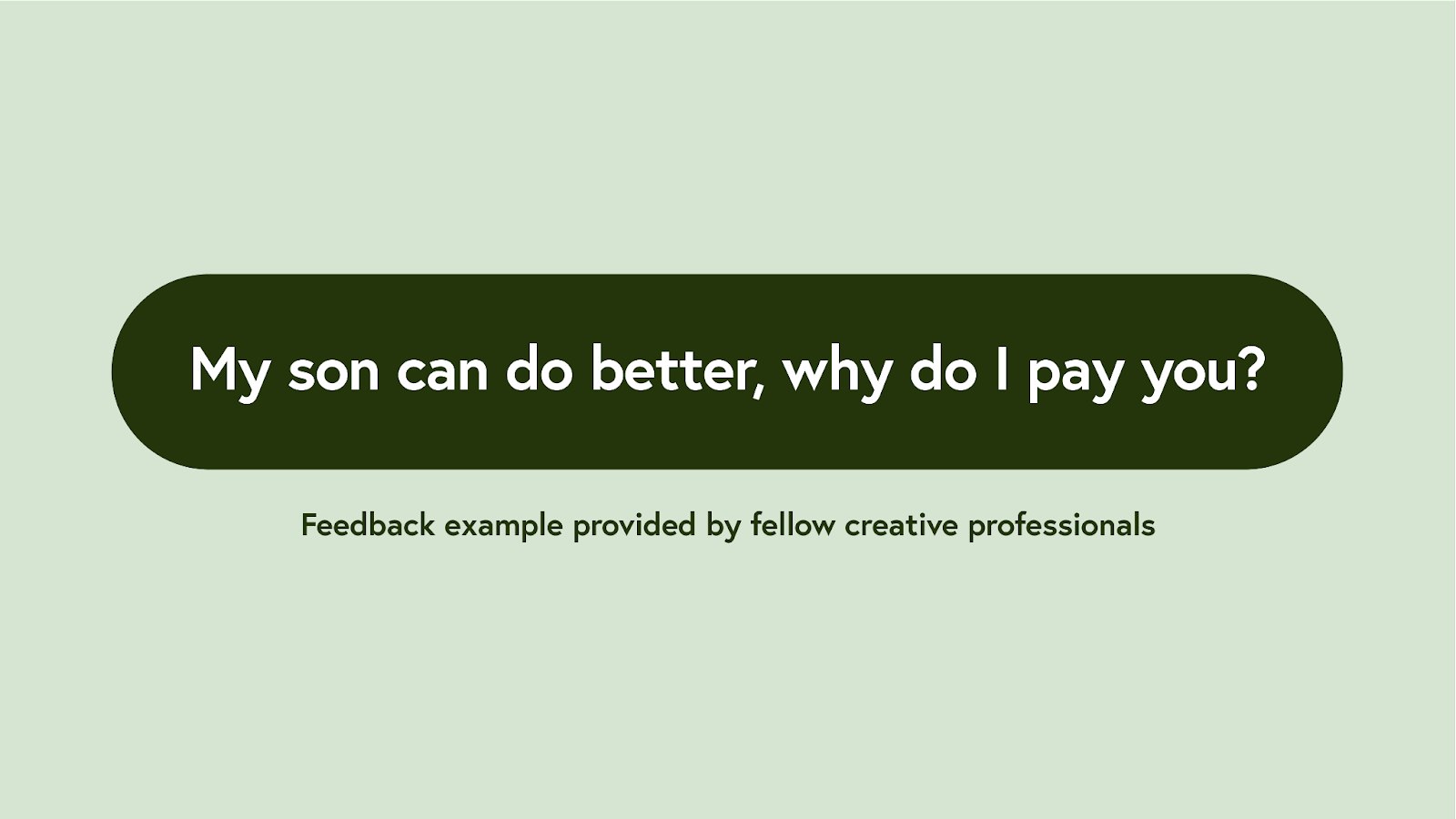
Stage 3: Explanation
After the first instinctive reaction, it’s time to pause. Consider why things are like they are. Sure there might be a lot of ifs and buts involved, but does the recipient really care about that?
Usually, it’s here that most of our encounters with our feedbackers end, where a thorough, well-expressed explanation of the “why” can preserve your feelings while offering a satisfying reason to the other side. But, even if this approach has proven successful for you in the past, it’s a good idea to take a look at the next two steps.
Stage 4: Appreciation
To accept the feedback, and have a pleasant dialogue with your client, you have to understand what the client actually said, first. Even if you disagree, try to be the “better you” and be vocal in your appreciation, and it will make the discussion more fruitful. By opening up a discussion, you get to further explore why the client reacted the way they did. The phrase “Thanks. I hear what you say.” will take you further than the previous steps.
Stage 5: Change
Which leads us to the last, most difficult step, but also the most impactful. And that’s choosing to purposefully take on criticism and apply it to your professional development. It might not be appropriate to enact every client note, but having this step in mind can help you take the feedback further. And your next project might just go a bit smoother, too.
Dealing with constructive feedback
At the end of the day, feedback can be a contributing factor in enhancing your work skills. Don’t take it personally. When things don’t go your way, or you don’t get the praise you expect, try to step aside. Treat it as an opportunity to learn if you’re doing things right in the first place.
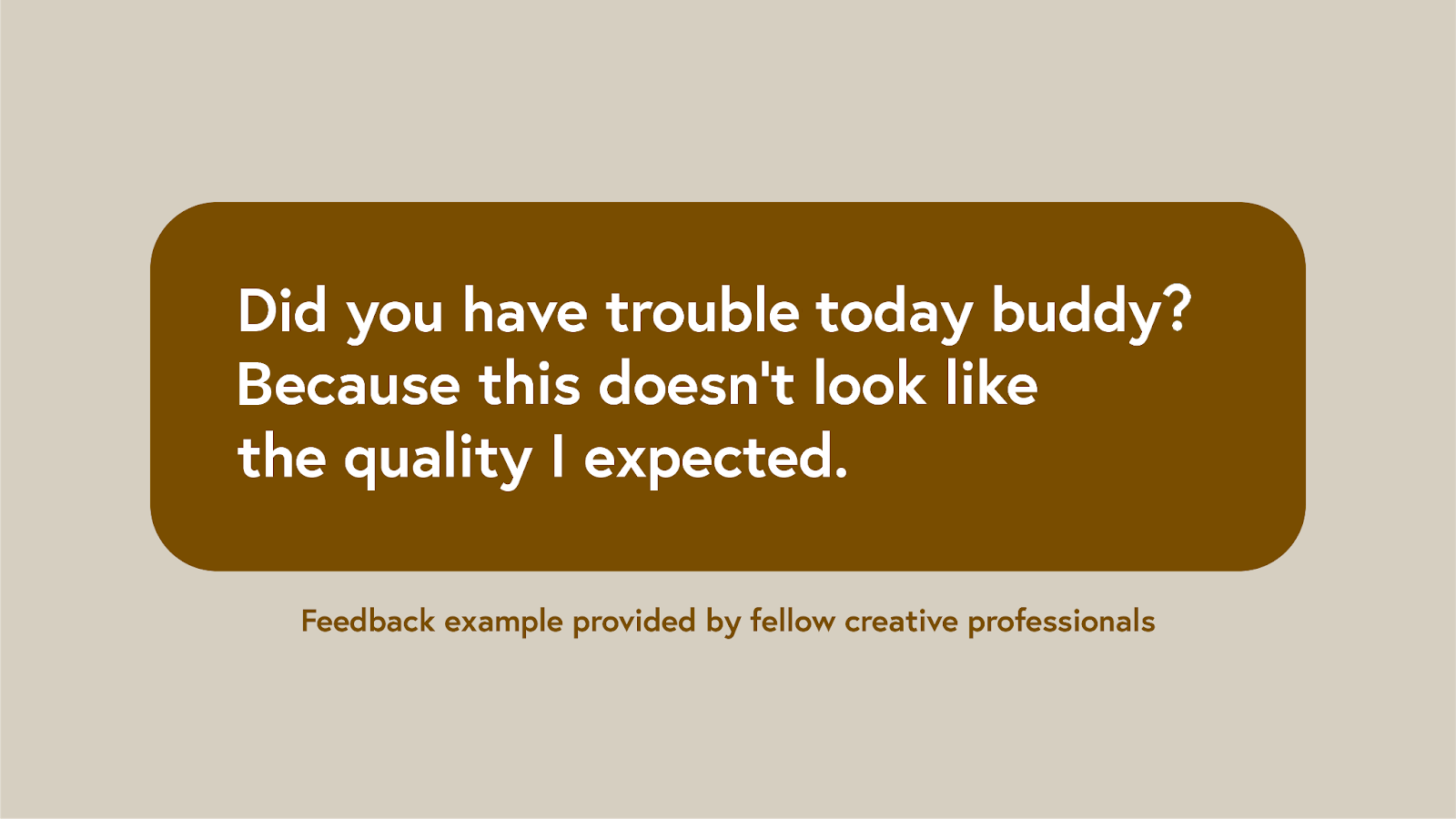
Feedback is part of the learning process, so use it to develop your skills and adapt to your circumstances. And remember, it’s not about you—the focal point is usually the project itself, with many people involved. Let go. Treat projects as a team effort and accept that you don’t have all the answers. Liberating, right?
Step back and see the bigger picture. Feedback is a signpost on the road, not a stop sign. The point of the comments is to improve the end result, and that’s everyone’s objective. So take a breather, think about it constructively, and suddenly that irritating comment might not sound too bad.
Dealing with unconstructive feedback
Of course, not all feedback is constructive, and some clients can hit hard. When encountering a plain nasty one, do your best to work around them. We’ve all been there.
Try to remember that they’re human, too. You don’t know what they’re having to deal with in their lives, or the pressure they’re under from their boss. Try to break down the comment without your personal feelings attached.
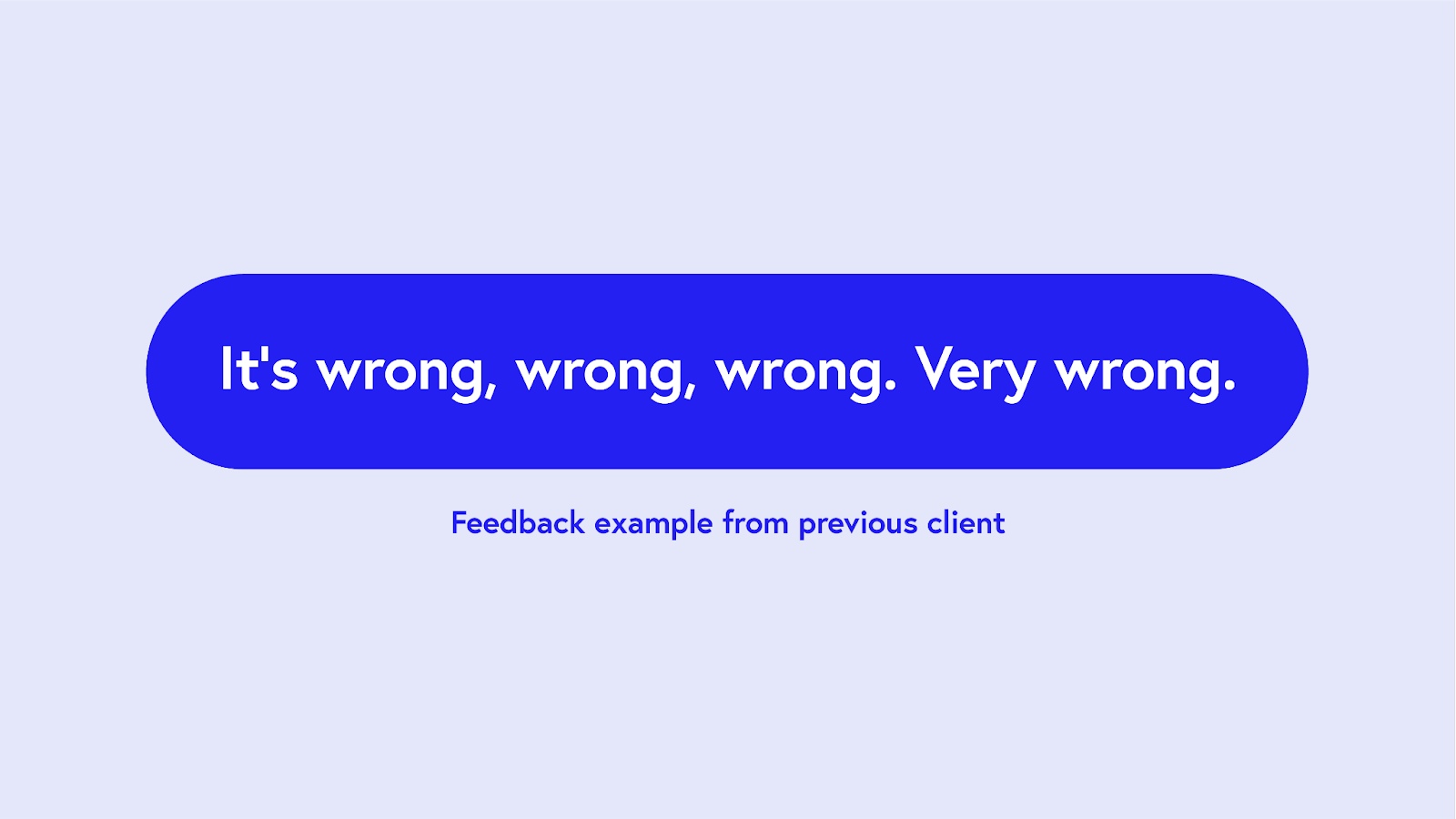
Treat the comments as a starting point for a conversation. The feedbacker might not have the best intention, or they simply might not be in the right mindset to provide constructive feedback. Sometimes, the comment will tell you more about your client than it does about your work.
So let’s get back to my client with the “I don’t like it” example. As you might expect, my initial reactions were not sound. Tears fell and bad words were spoken. And, after an emotional call with my partner later, I sat at my desk staring back at the comment. What did I do wrong?
A different light
Today I can see that situation in a different light. Sure, the feedback was unconstructive, but it forced me to take a second look at the project. While reviewing, I noticed several mistakes in my work.
So the client was blunt, but not entirely wrong. Some parts were good, but others needed improvement. It’s possible that, had the feedback been more gentle, or the client more malleable, I would have pushed back harder and the mistakes might never have been fixed.
Instead, I had to take it at face value, see the work from the client’s position, and make changes that led to a better finished product.
Tips and tricks
Specify the wanted feedback
Being specific on the areas you want feedback to focus us on can avoid miscommunication. It can feel trivial, but it makes it easier for the feedbacker to put their energy into the “right” areas and not be distracted by things that are not finished—like getting the edit signed off before it goes to the colorist.
Just ask
When you’re stuck in Stages 1 and 2, it’s easy to make emotional assumptions, especially when the feedback is vague. Put your initial feelings aside and ask yourself, does this comment make sense in the context? A simple message might just clear up the misunderstanding.
Think ahead
Dwelling on mistakes or mishaps doesn’t help anyone. Use your energy on patching them up and getting your project moving forward. The things that happened in the past are already a sunk cost, so take notes of the learnings and avoid them from happening again.
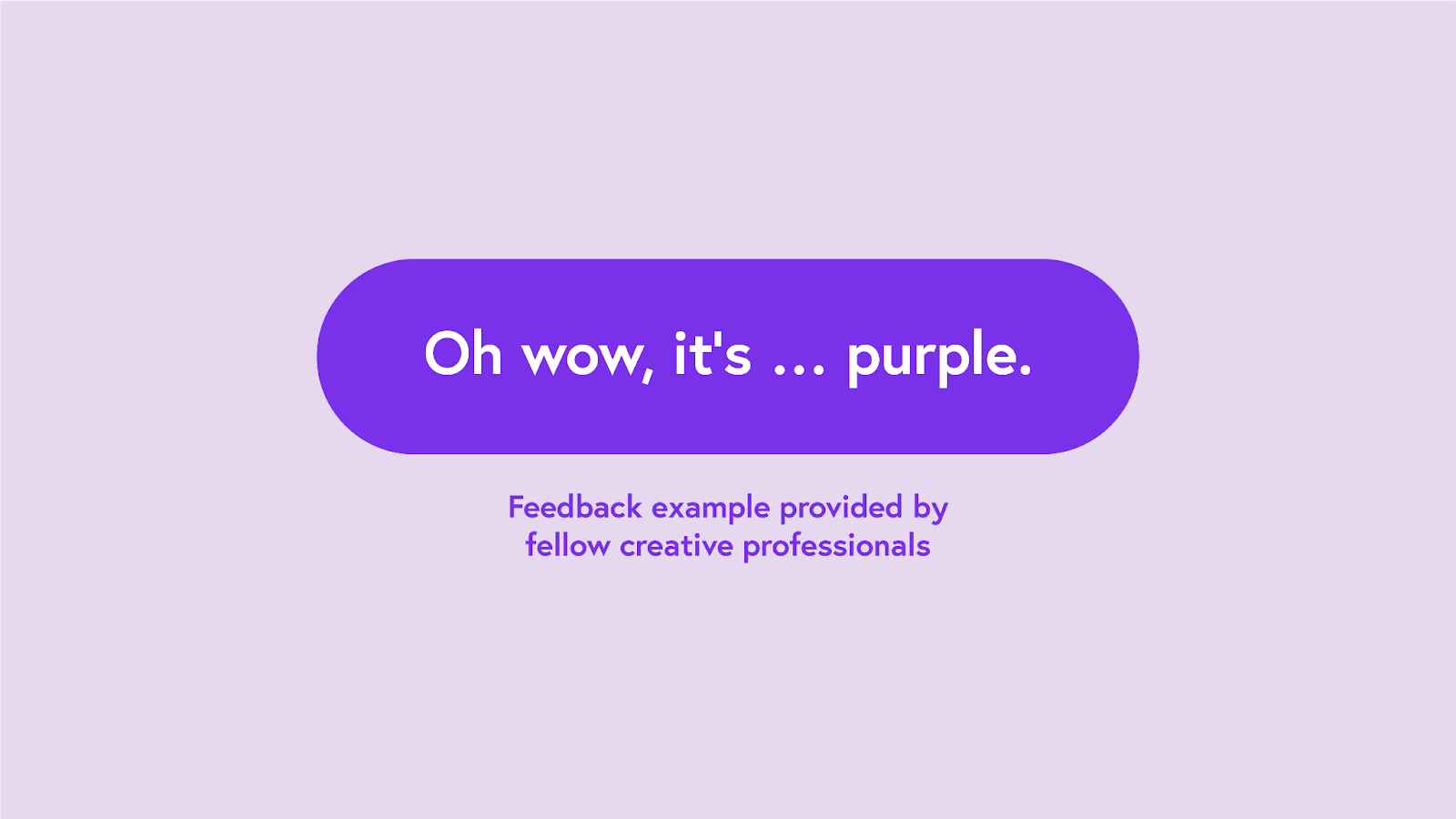
Take a breather (or a fika)
When the feedback stings a bit too much, take a breath and try to remind yourself it is part of the process. This is a perfect time for what we in Sweden call “fika”—which is basically a break including a sweet bun and a cup of coffee. Preferably having at least one a day, it’s very energizing for the soul, I promise you.
The unofficial second opinion
It’s possible, when your emotional response has taken over, that you might not have correctly determined the meaning of a comment. In that case, a second pair of eyes can be invaluable. So seek out someone you trust and share your thoughts with them.
They can provide you with a piece of sound advice, or simply a shoulder for you to rely on. Either way, it can be helpful to have an outside perspective on the matter. And with these tools at your disposal, client feedback might even become the favorite part of your project.




